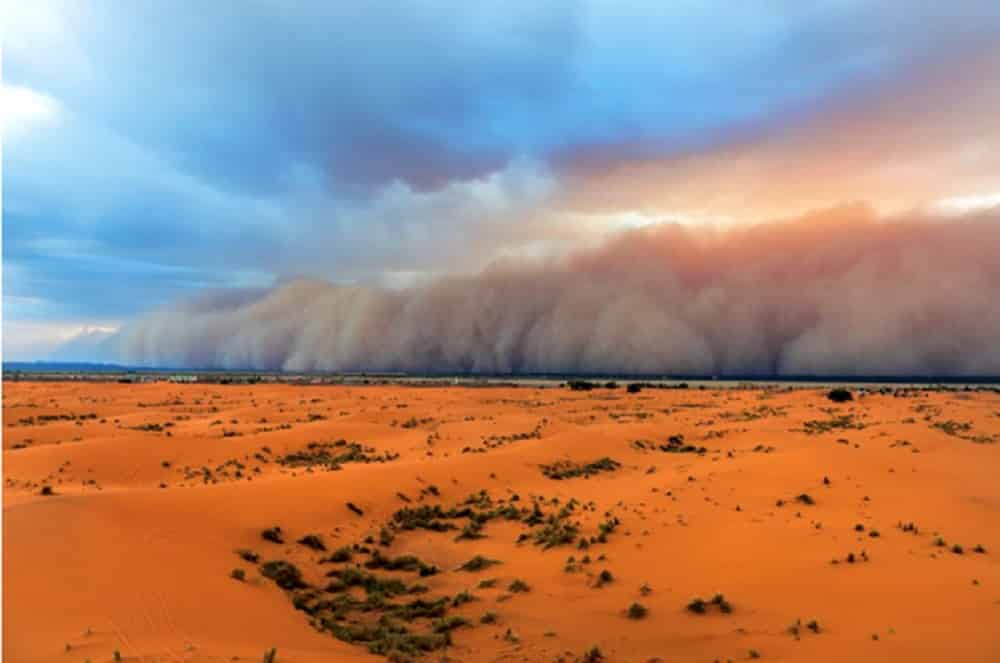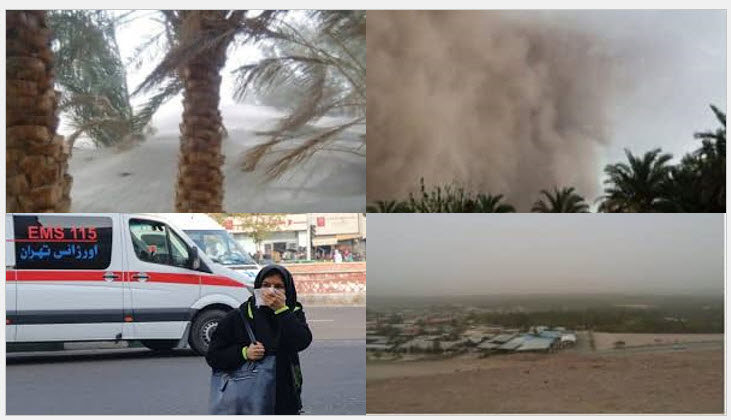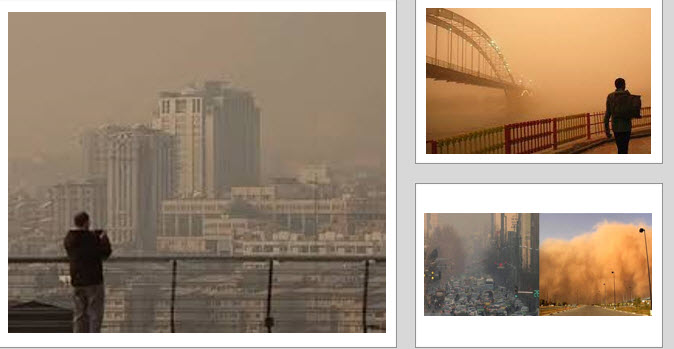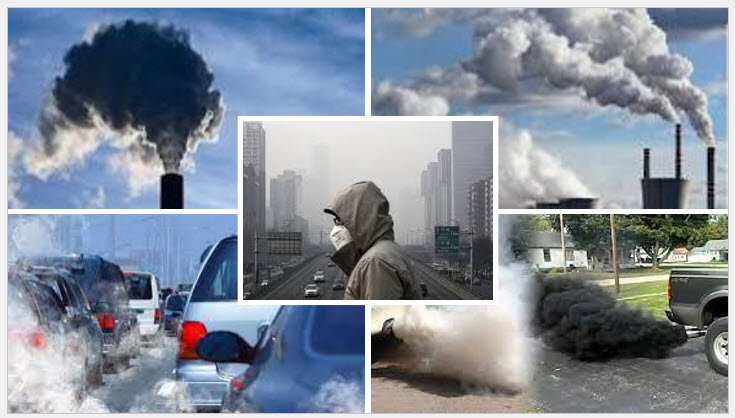
Thousands of people have been admitted to hospitals across the region due to respiratory problems, and airports, schools, and government offices have been closed as a result of the ongoing storms.
Parts of Iraq, Iran, Syria, Kuwait, and Saudi Arabia have been engulfed by an unusually high number of dust storms containing particulate matter (PM) in recent months. Thousands of people have been admitted to hospitals across the region due to respiratory problems, and airports, schools, and government offices have been closed as a result of the ongoing storms. Mismanagement of natural ecosystems, agricultural areas, misuse of water resources, ongoing drought, and the effects of climate change are being blamed by officials and experts in the region for the increasing frequency and intensity of dust storms.
Dust storms containing fine particulates have hit twenty-two provinces in Iran. For many years, the western and southern provinces have been the most severely affected, with Khuzestan Province in the southwest of the country experiencing a severe dust phenomenon since 2000. Dust storms have a significant impact on mortality from daily non-accidental, cardiovascular, and respiratory conditions in this area.
Dust storm particulates are a major source of air pollutants in desert and arid regions. Dust storms can transport PMs from remote arid regions and desert areas to residential areas, causing atmospheric PM concentrations in those areas to exceed recommended health standards by several times. These particles can enter the respiratory tract due to their small size, and once inside the lungs, they can cause specific organ damage as well as systemic damage to other parts of the body, such as the heart and brain.

Dust storms can transport PMs from remote arid regions and desert areas to residential areas, causing atmospheric PM concentrations in those areas to exceed recommended health standards by several times.
The transport of pathogens and pollutants can also be aided by blowing dust. It reduces visibility, causes automobile accidents, soils property, and causes illnesses in areas downwind of dust source regions. Heart irregularities, heart attacks, respiratory problems, severe and chronic headaches, severe allergies, and skin diseases have all been linked to dust particulate inhalation.
It is undeniable that dust storms in Khuzestan and other Iranian provinces are mostly endemic or local, rather than of foreign origin. The majority of particulates in Khuzestan Province’s dust storms came from two sources: the western region of Ahvaz and the Hoor-al-AzimWetland area.
The proximity of storms originating in the Hoor-al-Azim Wetland area, as well as the close proximity of foreign sources, can both be attributed to the significant increase in mortality.

The majority of particulates in Khuzestan Province’s dust storms came from two sources: the western region of Ahvaz and the Hoor-al-Azim Wetland area.
Dust storms, climate change, and global warming are all overlapping issues of the clerical regime’s unsustainable environmental policies, some of which extend beyond Iran’s borders. Long-term changes in anthropogenic activities, primarily the activities of the Islamic Revolutionary Guard Corps (IRGC), various government officials, and various religious foundations, are mostly contributing to the pollution of the air and water.
Because the wetlands of Horolazim and Shadegan were drained for oil exploration, they have become one of the major sources of dust particulates. The province’s most important water resources, the Karun, Karkheh, and Jarrahi rivers, have now been depleted and contain unprecedented levels of toxic waste. Furthermore, numerous dams had been built on them, leaving their dry beds as an additional source of dust particulates.

the activities of the Islamic Revolutionary Guard Corps (IRGC), various government officials, and various religious foundations are mostly contributing to the pollution of the air and water.
Iran’s ecosystems have suffered serious damage as a result of such unsustainable policies with devastating consequences and overexploitation of the natural environment. Air pollution, pesticide pollution, soil depletion, erosion, water depletion, natural resource loss, ineffective waste management, lead poisoning, deforestation, and desertification are just a few of the problems.
Due to the ruling clerical regime’s mismanagement, corruption, and water plundering, the country now faces severe water shortages and dust storms. Officials from the regime and some foreign and domestic experts are attempting to portray the severity of the situation as a result of drought, climate change, and global warming rather than the notorious Iranian water mafia.

Air pollution, pesticide pollution, soil depletion, erosion, water depletion, natural resource loss, ineffective waste management, lead poisoning, deforestation, and desertification are just a few of the problems.
MEK Iran (follow us on Twitter and Facebook), Maryam Rajavi’s on her site, Twitter & Facebook, NCRI (Twitter & Facebook), and People’s Mojahedin Organization of Iran – MEK IRAN – YouTu

